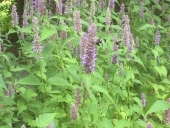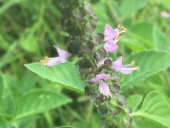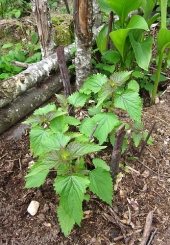posted 3 years ago
I don't need the seeds but thank you for offering them! I'll just comment with some growing notes.
I first bought a packet of anise hyssop seeds a few years ago. The seeds are tiny and I had trouble keeping them damp enough on the surface of the soil, and then for weeks of tiny seedlings. But eventually I got one going, and ever since then they have been self-seeding.
Uses:
• It is grown as an ornamental sometimes, for its tall soft spikes of small purple flowers.
• Herbal tea from the leaves (if you like anise / licorice flavor)
• Chopped fine into leafy salad (if you like the anise flavor)
• Attracts pollinators and maybe other beneficials too.
• I guess the flower spikes are edible but don't seem like a nice texture to eat. We have used them as stirrers or garnish in drinks. Eh, fine, nothing special.
The leaves make a lovely herbal tea (if you like licorice / anise flavor). I also like it as an iced tea. I soak a large handful of leaves chopped up in a jar of boiling hot water. If left for a few hours, it can became sweet enough to be as if there were sugar added, so I like it as an iced tea.
I've found that in my unheated solar greenhouse that goes below freezing every night for about 3 months of winter, when the anise hyssop turns a dark purplish color, it makes a blue tea. Which entertains me and I like it.
If it gets too worn out in the winter you can cut it down to the ground and it will sprout back from the roots vigorously. Outdoors, where I think we get minimums of -20C to -25C (zone 5?) it dies to the ground and rebounds in the spring.
It is said to be a short-lived perennial. It self-seeds vigorously, and transplants happily. It's easy enough to pull out if you need to, and aside from getting bigger from the base, it doesn't spread like its mint cousins.
Works at a residential alternative high school in the Himalayas SECMOL.org . "Back home" is Cape Cod, E Coast USA.

 10
10





 1
1





 6
6




 1
1




 1
1




 2
2









 1
1




 1
1

























